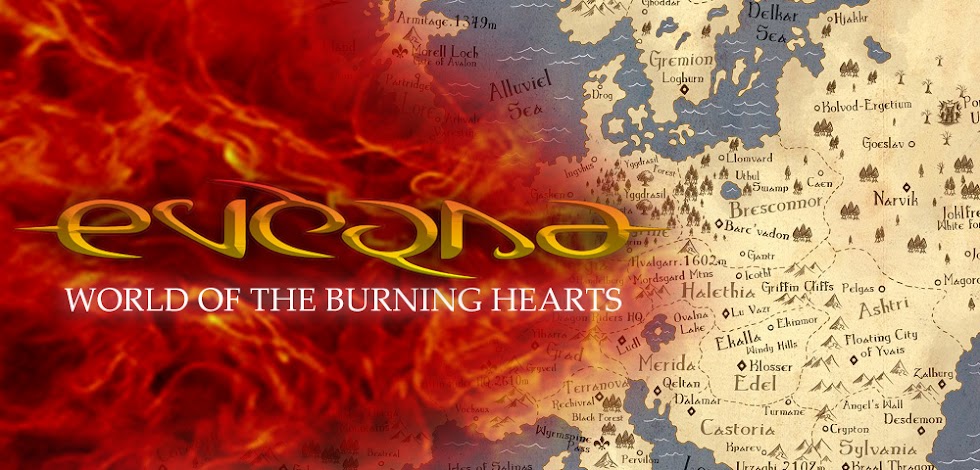To Everna and Beyond!
The official blog and novelblog for Evernade Saga and FireHeart Saga by Andry Chang
"Come forth, Paladins! Fulfill your destiny!"
Explore Worlds in Clicks
Friday, September 28, 2007
BASTARD!! Episode IV
http://www.youtube.com/watch?v=E1S5IkrKRq8
Episode 4 (2/3)
http://www.youtube.com/watch?v=9djY6ylGo-Y
Episode 4 (3/3)
http://www.youtube.com/watch?v=-sVYTN-GYZQ
Thursday, September 27, 2007
Adventure Quest


RPG Web-Based Fantasy Game
http://www.battleon.com/
What is AdventureQuest?
AdventureQuest is a fully Flash-animated RPG that you can play when you are on your lunchbreak, when the big game servers go down, or even for hours every day! You fight against hordes of monsters and enemies so that you can grow stronger and obtain ancient weapons of unimaginable power. You need nothing more than your web browser and the latest Macromedia Flash plugin to play.
Create a NEW Free Account today and enter the world of AdventureQuest! Explore an entire world, filled with over 700 monsters, hundreds of items, magical powers to gain, and many classes to master! Become a Fighter, Wizard, Ninja, Vampire Slayer, Rogue, Knight, Mage, Paladin, Dragonslayer, and more.
Always changing! This game is in an ongoing development phase. We are always creating and adding new content to the game and updating the main game engine to improve the experience for everyone. New quests, areas, items or events show up every week in AdventureQuest!
There are currently over 600 unique enemies to encounter, 400 unique weapons, over 150 unique armors and shields to use, and hundreds of spells and pets to aid you in battle, all found in dozens of quests, towns and areas through the world.
BJ Vadis' Note:
Hehe, meet Cristophe Deveraux from FireHeart - Legend of the Paladins in
Adventure Quest!
Wednesday, September 26, 2007
BASTARD!! Episode 3
Episode III
Part 1/3
Source:
http://www.youtube.com/watch?v=aQQpvLRYmmI
Part 2/3
Source:
http://www.youtube.com/watch?v=M940Z86YS80
Part 3/3
Source:
http://www.youtube.com/watch?v=lkre8Z3vfqI
Gotta... finish... blogging these all! Bastaaardsss!!! Aaargghh!!!
Tuesday, September 25, 2007
Enter the Strange Lands Correspondent Contest
 |
|
| |||||||||||||||||
| Copyright © 2007 Random House, inc. All Rights Reserved. To sign up for the Strange Lands Newsletter click here. To unsubscribe, send a email to this address or email unsub_scifi_fantasy@info.randomhouse.com The Strange Lands Newsletter is owned and operated by Random House, Inc. Subscribers must be 13 years or older. Members' e-mail addresses and information collected via this club will only be used by Random House, Inc. internally and will not be sold or distributed. For the complete Privacy Policy of Random House, Inc., please click here. |
Saturday, September 22, 2007
Romance of the Three Kingdoms Quiz
In Which Kingdom Do You Belong to? (Wei/Wu/Shu/Others?)
http://www.yueying.net/dw/?quiz=kingdom
BJ Vadis' Result:

Which Officer of Shu are you?
http://www.yueying.net/dw/?quiz=shu
BJ Vadis' Result:

Which Officer of Wu are you?
http://www.yueying.net/dw/?quiz=wu
BJ Vadis' Result:

Which Officer of Wei Are You?
http://www.yueying.net/dw/?quiz=wei
BJ Vadis' Result:

Friday, September 21, 2007
FireHeart Paladins - Characters Update Sept07-1
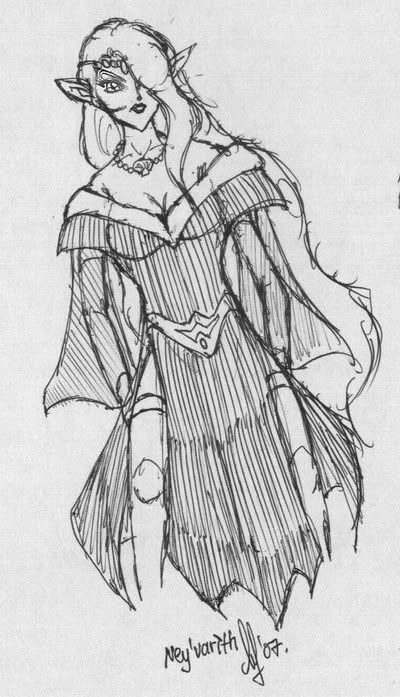
Ney'varith Luvazel
Thyrine, Elf Water Enchantress
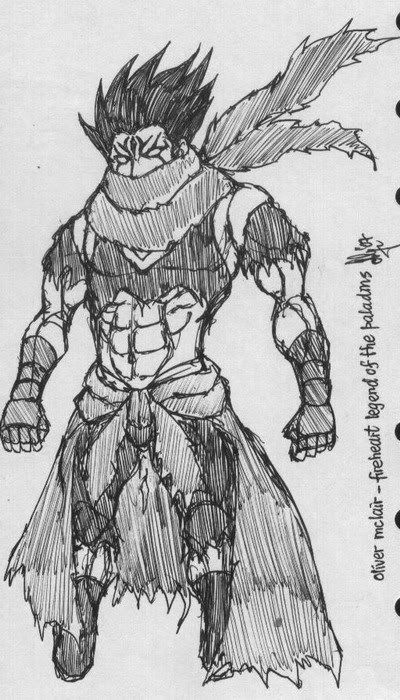
Oliver MacLair
Wardstone, Human - Assassin
Tarot Sign: Death

Dejan Pavlovic
Regia Confederation, Halfling
Tarot Sign: World

Bragl Dar'gum
Gremion, Orc Berserker
Tarot Sign: Hanged Man
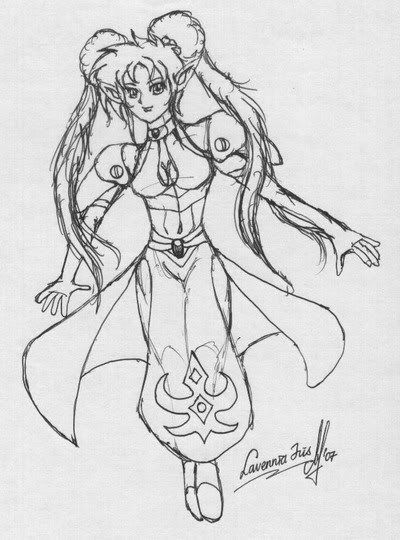
Lavennia Iris
Thyrine, Elf Wind/Nature Enchantress
Tarot Sign: Temperance
FireHeart Banners n Headers (Archive Post)
FireHeart Logo Banner
170 x 220px

FireHeart Banner 1
480 x 90px

FireHeart Archived Headers
Agt 07
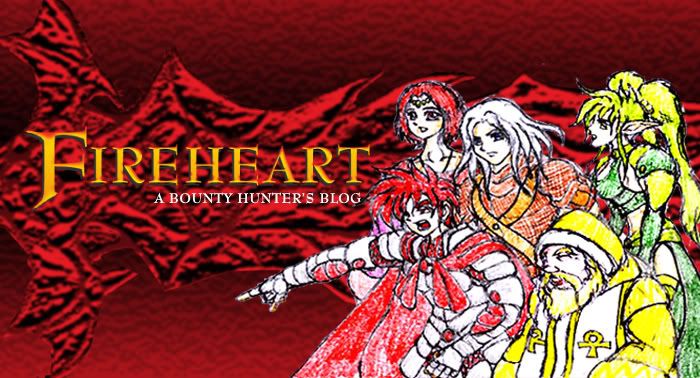
Jul 07

BASTARD!! Episode 2 part3
Source:
http://www.youtube.com/watch?v=WEu8hvekSA4
BASTARD!! Episode 2 part2
Source:
http://www.youtube.com/watch?v=odQy23qi8qA
BASTARD!! Episode 2 part1
http://www.youtube.com/watch?v=GglhtUPcD7c
Wednesday, September 19, 2007
BASTARD!! Episode 1
Episode 1 (1/3)
Source: http://www.youtube.com/watch?v=LOs2r-1ZNKY
Episode 1 (2/3)
Source: http://www.youtube.com/watch?v=5tZ8eefG3Ko
Episode 1 (3/3)
Source: http://www.youtube.com/watch?v=pfaPdX7GXqw
Evanescense - Bring me to life (Final Fantasy anime version)
Source:
http://www.youtube.com/watch?v=dRv1FRW1-18
Sunday, September 16, 2007
Excalibur
Excalibur
From Wikipedia, the free encyclopedia
Excalibur is the mythical sword of King Arthur, sometimes attributed with magical powers or associated with the rightful sovereignty of Great Britain. Sometimes Excalibur and the Sword in the Stone (the proof of Arthur's lineage) are said to be the same weapon, but in most versions they are considered separate. The sword was associated with the Arthurian legend very early. In Welsh, the sword is called Caledfwlch.
Contents[hide] |
[edit] Forms and etymologies
The name Excalibur came from Old French Excalibor, which came from Caliburn used in Geoffrey of Monmouth (c. 1140) (Latin Caliburnus). There are also variant spellings such as Escalibor and Excaliber (the latter used in Howard Pyle's books for younger readers). One theory holds that Caliburn[us] comes from Caledfwlch, the original Welsh name for the sword, which is first mentioned in the Mabinogion. This may be cognate with Caladbolg ("hard-belly", i.e. "voracious"), a legendary Irish sword (see below). Another theory (noted in The New Arthurian Encyclopedia, 1995) states that "Caliburnus" is ultimately derived from Latin chalybs "steel", which is in turn derived from Chalybes, the name of an Anatolian ironworking tribe. This is noted and used by the historian Valerio Massimo Manfredi in his novel The Last Legion (2002: the English translation has Calibian instead of the intended Chalybian). According to Brewer's Dictionary of Phrase and Fable by Ebenezer Cobham Brewer, Excalibur was originally derived from the Latin phrase Ex calce liberatus, "liberated from the stone". In Malory, Excalibur is said to mean "cut-steel", which some have interpreted to mean "steel-cutter".
[edit] Excalibur and the Sword in the Stone

In surviving accounts of Arthur, there are two originally separate legends about the sword's origin. The first is the "Sword in the Stone" legend, originally appearing in Robert de Boron's poem Merlin, in which Excalibur can only be drawn from the stone by Arthur, the rightful king. The second comes from the later Post-Vulgate Suite du Merlin, which was taken up by Sir Thomas Malory. Here, Arthur receives Excalibur from the Lady of the Lake after breaking his first sword in a fight with King Pellinore. The Lady of the Lake calls the sword "Excalibur, that is as to say as Cut-steel," and Arthur takes it from a hand rising out of the lake.
As Arthur lies dying, he tells Sir Bedivere (Sir Griflet in some versions) to return his sword to the lake by throwing it into the water. Bedivere is reluctant to throw away such a precious sword, so twice he only pretends to do so. Each time, Arthur asks him to describe what he saw. When Bedivere tells him the sword simply fell into the water, Arthur scolds him harshly. Finally, Bedivere throws Excalibur into the lake. Before the sword strikes the water's surface, a hand reaches up to grasp it and pulls it under. Arthur leaves on a death barge with the three queens to Avalon, where as his legend says, he will one day return to rule in Britain's darkest hour.
Malory records both versions of the legend in his Le Morte d'Arthur, and confusingly calls both swords Excalibur. The film Excalibur attempts to rectify this by having only one sword, which Arthur inherits through his father and later breaks; the Lady of the Lake then repairs it.
[edit] History

[edit] Caledfwlch
In Welsh legend, Arthur's sword is known as Caledfwlch. In Culhwch and Olwen, it is one of Arthur's most valuable possessions and is used by Arthur's warrior Llenlleawg the Irishman to kill the Irish king Diwrnach while stealing his magical cauldron. Caledfwlch is thought to derive from the legendary Irish weapon Caladbolg, the lightning sword of Fergus mac Roich. Caladbolg was also known for its incredible power, and was carried by some of Ireland's greatest heroes.
Though not named as Caledfwlch, Arthur's sword is described vividly in The Dream of Rhonabwy one of the tales associated with the Mabinogion:
Then they heard Cadwr Earl of Cornwall being summoned, and saw him rise with Arthur's sword in his hand, with a design of two serpents on the golden hilt; when the sword was unsheathed what was seen from the mouths of the two serpents was like two flames of fire, so dreadful that it was not easy for anyone to look. At that the host settled and the commotion subsided, and the earl returned to his tent.
—From The Mabinogion, translated by Jeffrey Gantz.[1]
[edit] Caliburn to Excalibur
Geoffrey of Monmouth's History of the Kings of Britain is the first non-Welsh source to speak of the sword. Geoffrey says the sword was forged in Avalon and Latinizes the name "Caledfwlch" to Caliburn or Caliburnus. When his influential pseudo-history made it to Continental Europe, writers altered the name further until it became Excalibur. The legend was expanded upon in the Vulgate Cycle (c. 1230–1250), also known as the Lancelot-Grail Cycle, and in the Post-Vulgate Cycle which emerged in its wake. Both included the work known as the Prose Merlin, but the Post-Vulgate authors left out the Merlin Continuation from the earlier cycle, choosing to add an original account of Arthur's early days including a new origin for Excalibur.
[edit] Other information
The story of the Sword in the Stone has an analogue in some versions of the story of Sigurd (the Norse proto-Siegfried), who draws his father Sigmund's sword out of a tree where it is embedded.
Interestingly, in several early French works such as Chrétien de Troyes' Perceval, the Story of the Grail and the Vulgate Lancelot Proper section, Excalibur is used by Gawain, Arthur's nephew and one of his best knights. This is in contrast to later versions, where Excalibur belongs solely to the king. In the Alliterative Morte Arthure (ca. 1400), Arthur is said to have two legendary swords, the second one being Clarent, stolen by the evil Mordred. Arthur receives his fatal blow from Clarent.
[edit] Attributes
In many versions, Excalibur's blade was engraved with words on opposite sides. On one side were the words "take me up", and on the other side "cast me away" (or similar words). This prefigures its return into the water. In addition, when Excalibur was first drawn, Arthur's enemies were blinded by its blade, which was as bright as thirty torches. Excalibur's scabbard was said to have powers of its own. Injuries from losses of blood, for example, would not kill the bearer. In some tellings, wounds received by one wearing the scabbard did not bleed at all. The scabbard is stolen by Morgan le Fay and thrown into a lake, never to be found again.
The 19th century poet Alfred, Lord Tennyson, described the sword in full Romantic detail in his poem "Morte d'Arthur", later rewritten as "The Passing of Arthur", one of the Idylls of the King:
[edit] See also
Tristan and Isolde
Tristan
From Wikipedia, the free encyclopedia
Sir Tristan(Latin/Brythonic: Drustanus; Welsh: Drystan; also known as Tristran, Tristram, etc.) is one of the main characters of the Tristan and Iseult story, a Cornish hero and one of the Knights of the Round Table featuring in the Matter of Britain. He is the son of Blancheflor and Rivalen (in later versions Isabelle and Meliodas), and the nephew of King Mark of Cornwall, sent to fetch Iseult back from Ireland to wed the king. However, he and Iseult accidentally consume a love potion while en route and fall helplessly in love. The pair undergo numerous trials that test their secret affair.
Contents[hide] |
[edit] The Tristan legend cycle
Tristan makes his first medieval appearance in the early twelfth century in Celtic folklore circulating in the north of France. Although the oldest stories concerning Tristan are lost, some of the derivatives still exist. Most early versions fall into one of two branches, "courtly" branch represented in the retellings of the Anglo-Norman poet Thomas of Britain and his German successor Gottfried von Strassburg, and the "common" branch, including the works of the French poet Béroul and the German poet Eilhart von Oberge.
Arthurian romancier Chrétien de Troyes mentions in his poem Cligès that he composed his own account of the story; however, there are no surviving copies or records of any such text. In the thirteenth century, during the great period of prose romances, appeared the Tristan en prose or Prose Tristan, one of the most popular romances of its time. This long, sprawling, and often lyrical, work (the modern edition takes up thirteen volumes) follows Tristan from the traditional legend into the realm of King Arthur where Tristan participates in the Quest for the Holy Grail. In the fifteenth century, Sir Thomas Malory shortened this French version into his own take, The Book of Sir Tristram de Lyones, found in his Le Morte D'Arthur.
[edit] Historical roots
There are strange aspects to Tristan, such as his Pictish name. Drust is a very common name of Pictish kings, and Drustanus is merely Drust rendered into Latin. It may have originated from an ancient legend regarding a Pictish king who slew a giant in the distant past, which had spread throughout the isles.
Another strange aspect is his kingdom, Lyonesse, for whose existence there is no evidence. However there were two places called Leonais: one in Brittany, the other the Old French transcription of Lothian. However, the Islands of Scilly have also been proposed to be this place, since they were possibly one island until Roman times and several islands are interconnected at low tide. Regardless, Tristan being a prince of Lothian would make his name more sensible, Lothian being on the borderlands of the Pictish High-Kingship (and once was a part of Pictish territory; Tristan may in fact have been a Pictish prince under a British King). One suggestion is that he could have been adopted into the family of Mark of Cornwall, historically a practice attested in Roman law.
[edit] The Tristan and Iseult romance
- Main article: Tristan and Iseult
The romantic narrative of the Tristan and Iseult love affair predated and most likely influenced the Arthurian romance of Lancelot and Guinevere.[citation needed] The legend tells of the love affair between Tristan and Iseult of Ireland (the promised bride of Tristan's uncle), and the events and trials that the lovers go through to cover up their secret affair.
[edit] Modern adaptations
In 1857–59, Richard Wagner composed the opera Tristan and Isolde, now considered one of the most influential pieces of music of the 19th century. In his work, Tristan is portrayed as a doomed romantic figure.
Algernon Charles Swinburne wrote an epic poem Tristram of Lyonesse. The story has also been adapted into film many times. [1] The most recent is the American version entitled Tristan & Isolde, produced by Tony and Ridley Scott, written by Dean Georgaris, directed by Kevin Reynolds, and starring James Franco and Sophia Myles. The story of Tristan has also been represented through the song of the same name by the artist Patrick Wolf.
Tristan plays a prominent role in the comic book series Camelot 3000, in which he is reincarnated in A.D. 3000 as a woman and subsequently struggles to come to terms with his new body and identity and to reconcile them in turn with his previous notions of gender roles and of his own sexuality.
Russian composer Nikita Koshkin wrote a classical guitar solo entitled Tristan Playing the Lute in 1983. Tristan Playing the Lute evokes the spirit of Tristan from the legend of "Tristan and Isolde", set in a playful adaptation of traditional English lute music, at least initially. According to Koshkin:
In the 2004 film, King Arthur, based on the Sarmatian connection theory of origin for the Arthurian legends, Tristan (Mads Mikkelsen) is a prominent member of the knights, who are Sarmatians serving under a half-Roman Arthur in the 5th century. He is a cavalry archer, and uses a sword similar to, if not a dao. It seems that he finds a pleasure in killing and is quite good at it. He has a pet falcon, which he greatly treasures and uses as a lookout for Arthur and the rest of the knights in the film. He is killed by Cerdic in single combat in the Battle of Badon Hill"Tristan was written as a musical joke. It was a period when I was fond of all the stories about King Arthur and his Knights of the Round Table. Tristan was not only a great fighter, but he also played many musical instruments and had a beautiful singing voice. This is why I thought he could be the subject of a piece to suggest the process of improvising in a characteristic early style that then begins to change to futuristic musical ideas. The first section of the piece is clearly ancient in style; the second is more modern; then the third introduces elements of Eastern music as well as some rock riffs. The idea is that Tristan, during his improvising, is building musical bridges to the future."
Tristan and Isolde
Tristan
From Wikipedia, the free encyclopedia
Sir Tristan(Latin/Brythonic: Drustanus; Welsh: Drystan; also known as Tristran, Tristram, etc.) is one of the main characters of the Tristan and Iseult story, a Cornish hero and one of the Knights of the Round Table featuring in the Matter of Britain. He is the son of Blancheflor and Rivalen (in later versions Isabelle and Meliodas), and the nephew of King Mark of Cornwall, sent to fetch Iseult back from Ireland to wed the king. However, he and Iseult accidentally consume a love potion while en route and fall helplessly in love. The pair undergo numerous trials that test their secret affair.
Contents[hide] |
[edit] The Tristan legend cycle
Tristan makes his first medieval appearance in the early twelfth century in Celtic folklore circulating in the north of France. Although the oldest stories concerning Tristan are lost, some of the derivatives still exist. Most early versions fall into one of two branches, "courtly" branch represented in the retellings of the Anglo-Norman poet Thomas of Britain and his German successor Gottfried von Strassburg, and the "common" branch, including the works of the French poet Béroul and the German poet Eilhart von Oberge.
Arthurian romancier Chrétien de Troyes mentions in his poem Cligès that he composed his own account of the story; however, there are no surviving copies or records of any such text. In the thirteenth century, during the great period of prose romances, appeared the Tristan en prose or Prose Tristan, one of the most popular romances of its time. This long, sprawling, and often lyrical, work (the modern edition takes up thirteen volumes) follows Tristan from the traditional legend into the realm of King Arthur where Tristan participates in the Quest for the Holy Grail. In the fifteenth century, Sir Thomas Malory shortened this French version into his own take, The Book of Sir Tristram de Lyones, found in his Le Morte D'Arthur.
[edit] Historical roots
There are strange aspects to Tristan, such as his Pictish name. Drust is a very common name of Pictish kings, and Drustanus is merely Drust rendered into Latin. It may have originated from an ancient legend regarding a Pictish king who slew a giant in the distant past, which had spread throughout the isles.
Another strange aspect is his kingdom, Lyonesse, for whose existence there is no evidence. However there were two places called Leonais: one in Brittany, the other the Old French transcription of Lothian. However, the Islands of Scilly have also been proposed to be this place, since they were possibly one island until Roman times and several islands are interconnected at low tide. Regardless, Tristan being a prince of Lothian would make his name more sensible, Lothian being on the borderlands of the Pictish High-Kingship (and once was a part of Pictish territory; Tristan may in fact have been a Pictish prince under a British King). One suggestion is that he could have been adopted into the family of Mark of Cornwall, historically a practice attested in Roman law.
[edit] The Tristan and Iseult romance
- Main article: Tristan and Iseult
The romantic narrative of the Tristan and Iseult love affair predated and most likely influenced the Arthurian romance of Lancelot and Guinevere.[citation needed] The legend tells of the love affair between Tristan and Iseult of Ireland (the promised bride of Tristan's uncle), and the events and trials that the lovers go through to cover up their secret affair.
[edit] Modern adaptations
In 1857–59, Richard Wagner composed the opera Tristan and Isolde, now considered one of the most influential pieces of music of the 19th century. In his work, Tristan is portrayed as a doomed romantic figure.
Algernon Charles Swinburne wrote an epic poem Tristram of Lyonesse. The story has also been adapted into film many times. [1] The most recent is the American version entitled Tristan & Isolde, produced by Tony and Ridley Scott, written by Dean Georgaris, directed by Kevin Reynolds, and starring James Franco and Sophia Myles. The story of Tristan has also been represented through the song of the same name by the artist Patrick Wolf.
Tristan plays a prominent role in the comic book series Camelot 3000, in which he is reincarnated in A.D. 3000 as a woman and subsequently struggles to come to terms with his new body and identity and to reconcile them in turn with his previous notions of gender roles and of his own sexuality.
Russian composer Nikita Koshkin wrote a classical guitar solo entitled Tristan Playing the Lute in 1983. Tristan Playing the Lute evokes the spirit of Tristan from the legend of "Tristan and Isolde", set in a playful adaptation of traditional English lute music, at least initially. According to Koshkin:
In the 2004 film, King Arthur, based on the Sarmatian connection theory of origin for the Arthurian legends, Tristan (Mads Mikkelsen) is a prominent member of the knights, who are Sarmatians serving under a half-Roman Arthur in the 5th century. He is a cavalry archer, and uses a sword similar to, if not a dao. It seems that he finds a pleasure in killing and is quite good at it. He has a pet falcon, which he greatly treasures and uses as a lookout for Arthur and the rest of the knights in the film. He is killed by Cerdic in single combat in the Battle of Badon Hill"Tristan was written as a musical joke. It was a period when I was fond of all the stories about King Arthur and his Knights of the Round Table. Tristan was not only a great fighter, but he also played many musical instruments and had a beautiful singing voice. This is why I thought he could be the subject of a piece to suggest the process of improvising in a characteristic early style that then begins to change to futuristic musical ideas. The first section of the piece is clearly ancient in style; the second is more modern; then the third introduces elements of Eastern music as well as some rock riffs. The idea is that Tristan, during his improvising, is building musical bridges to the future."
Legend of King Arthur
Knights of the Round Table
From Wikipedia, the free encyclopedia
Knights of the Round Table were those men awarded the highest order of Chivalry at the Court of King Arthur in the literary cycle the Matter of Britain. The table at which they met was created to have no head or foot, representing the equality of all the members. Different stories had different numbers of knights, ranging from only 12 to 150 or more. The Winchester Round Table, which dates from the 1270s, lists 25 names of knights.
Sir Thomas Malory describes the Knights' code of chivalry as:
- To never do outrage nor murder
- Always to flee treason
- To by no means be cruel but to give mercy unto him who asks for mercy
- To always do ladies, gentlewomen and widows succor
- To never force ladies, gentlewomen or widows
- Not to take up battles in wrongful quarrels for love or worldly goods
Contents[hide] |
[edit] Origins of the Round Table
The first writer to describe the Round Table was Wace, whose Roman de Brut was an elaboration of Geoffrey of Monmouth's Historia Regum Britanniae. The actual table itself was round in order to represent that each knight was of equal value to the king and thus there was no 'head' of the table, although one understood that Arthur's place was 'the head.' In later writings, the table was said to be a gift to King Arthur from his father-in-law, King Leodogran of Cameliard, as a wedding gift upon the marriage of Arthur to Guinevere. The company was used by many subsequent authors. However, even the earliest writers ascribe to Arthur a following of extraordinary warriors; in Geoffrey, Arthur's court attracts the greatest heroes from all of Europe. In the Welsh Arthurian material, much of which is included in the Mabinogion, Arthur's men are attributed with superhuman abilities. Some of the characters from the Welsh material even appear under altered names as Knights of the Round Table in the continental romances, the most notable of which are Cai (Sir Kay), Bedwyr (Sir Bedivere), and Gwalchmai (Sir Gawain).
[edit] List of Knights of the Round Table
| This article does not cite any references or sources. Please help improve this article by adding citations to reliable sources. (help, get involved!) Unverifiable material may be challenged and removed. This article has been tagged since May 2007. |
- King Arthur
- Sir Aglovale, son of King Pellinore of Listinoise
- Sir Agravaine, son of King Lot of Orkney
- King Bagdemagus
- Sir Bedivere (Bedwyr)
- Sir Bors, King of Gannes (Gaul)
- Sir Breunor, also known as "La Cote Male Taile"
- Sir Cador
- Sir Caradoc, called "Caradoc Vreichvras", or "Caradoc Strong Arm"
- Sir Colgrevance
- Sir Constantine, son of Cador, who became king after Arthur's death
- Sir Daganoth (Leader or the fremenik isles tribe)
- Sir Dagonet, the court jester
- Sir Daniel
- Sir Dinadan, the son of Sir Brunor Senior and brother of Sirs Brunor le Noir 'La Cote Mal Taillée' and Daniel.
- Sir Ector, Arthur's foster father and Sir Kay's father
- Sir Ector de Maris, the son of King Ban of Benwick
- Sir Elyan the White, the son of Sir Bors
- Sir Erec, (see also Geraint)
- Sir Gaheris
- Sir Galahad (son of Lancelot; his seat was the Siege Perilous)
- Sir Galeshin (son of Elaine and King Nentres)
- Sir Gareth, also called Beaumains or Goodhands
- Sir Gawain (Gawaine, Walganus, Balbhuaidh, Gwalchmai)
- Sir Geraint (see also Erec)
- Sir Gingalain, called at first Sir Le Bel Inconnu ("The "Fair Unknown"), Gawain's son
|
In addition, Malory's account includes many obscure knights during the episode containing Sir Urry:
| |
| |
Sir Urry is a Hungarian knight who comes to Camelot, seeking Arthur's help in healing his wounds. In the end, 110 knights, in addition to Arthur, are unable to heal Sir Urry. When Sir Lancelot arrives in Camelot, his touch heals the wounded knight. This scene depicts all the knights together at the same time, with the exception of those deceased, on quest, or otherwise ascended (as with Galahad).
| Matter of Britain | |
|---|---|
| Key People | King Arthur · Sir Ector · Guinevere · Lady of the Lake · Merlin · Mordred · Morgan le Fay · Morgause · Uther Pendragon |
| Knights of the Round Table | Agravaine · Bedivere · Bors · Calogrenant · Galahad · Gareth · Gawain · Geraint · Kay · Lamorak · Lancelot · Percival · Sagramore · Tristan |
| Objects | Excalibur · Holy Grail · Round Table |
| Places | Avalon · Camelot · Corbenic |
| In Media | Books · Films |
vadisworld - my way, my world
FireHeart Blog List
-
Dig Two Graves by Craig Schaefer (reviewed by Mihir Wanchoo) - *Official Author Website* *Pre-order Dig Two Graves over HERE * *Read Fantasy Book Critic's review of The Long Way Down * *Read Fantasy Book Critic's ...1 day ago
-
ROSTA MASTA! The Exotic Super Cars Edition Vol. 01 - The Myth of Speed - ROSTA MASTA! The Myth of Speed Supercars and Hypercars League Edition PALADIN Pagani Huayra (Rival) MINERVA Koenigsegg Agera (Heroine) FENRIR Lykan Hyper...2 months ago
-
-
Wah Chang - The world of Star Trek is a troubled, but ultimately utopian world of interspecies collaboration and peace, a stark counterpoint to the tumultuous 1960’s i...1 year ago
-
-
Grand Emerald 3 – Disewakan lantai 29 (studio) - Rp 2.500.000,-/ bulan Rp 25.000.000,-/ tahun9 years ago
-
Divine Comedy - The Inferno (38 of 38) - --------------- SHARING We encourage sharing--forward to a friend! CANTO XXXIV “THE banners of Hell's Monarch do come forth Towards us; therefore look,” ...9 years ago
-
Galaxy Series at Samsung Forum 2013 - Samsung South East Asia Forum (atau disingkat Samsung Forum) merupakan pameran tahunan Samsung yang menampilkan produk-produk terbaru mereka. Yang menarik ...11 years ago
-
-
[Saint Cloth Myth] Tamashii Nation 2009 Autumn - Exclusive Figures!! - The Autumn Tamashii Nation 2009 will open to the public on Saturday but as always it opens a few days earlier for press visitors and as a result, we get ex...14 years ago
-
Coribug - The 'S hertogenbosch Messenger Beetle, or more commonly known as the Coribug, is one of the cities best kept fantastical secrets. With its sleek star cov...14 years ago
-
Titleless - So I haven't ditched the blog or moved onto other types of books. I've just moved again, and the place I'm at has no internet...yet, and I'm still learning...15 years ago
-
-
-
-
Vadis' Technorati Favourites
Pyr Publishing
Pat's Fantasy Hotlist
Sources and Studies Lookup
FireHeart Most Wanted!
-
Source: http://encyclopedia.thefreedictionary.com/druid Two druids, from an 1845 publication, based on a bas-relief found at Autun , France....
-
Main Branch Synopsis: Chapter One: The Crossroads Maven is a young girl orphaned from birth who wandered around the continent alone; s...
-
Fantasypedia Category: Medieval Siege Engines Source: http://en.wikipedia.org/wiki/Trebuchet Trebuchet From Wikipedia,...
-
No images? Click HERE . great gift ideas! Great sci-fi & fantasy gift book id...
-
The Crying Princess by Sandie May Angel a.k.a. Sandie Angel Buy this book Sandie Angel'sBooks World ...
-
s Source: http://youtu.be/ceHtrjIVRd8 Vandaria Saga: Winterflame is a crossplatforms fantasy story about a legendary dragon weapon ami...
-
s source: https://youtu.be/HAGUDhGtfnw
-
Journey to the Underland with Alice in an all new video game inspired by the Tim Burton film and experience a fantastical world of illusions...
